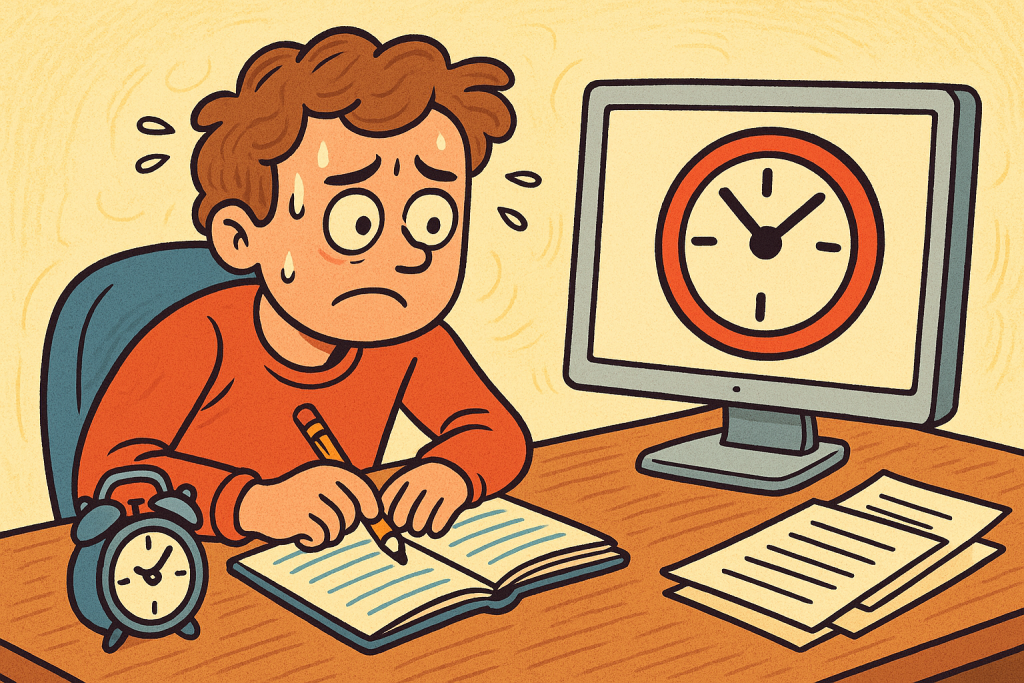Feeling stuck without real deadlines? You’re not alone. Understanding why deadlines work (even when they’re fake) can unlock surprising productivity boosts and beat procrastination.

1. The Psychology Behind Fake Deadlines
Hyperbolic Discounting & Temporal Landmarks
Humans are wired to focus on the immediate—delaying tasks if time feels far away. However, fake deadlines create artificial urgency. According to Temporal Motivation Theory, motivation spikes as deadlines approach because the perceived reward outweighs delays.
Students regularly ramp up their efforts closer to exams or assignment due dates, even if their motivation drops over time. Fake deadlines tap into the same trigger: we work efficiently under impending time pressure.
Fear of Missing Out & Scarcity
Behavioral economics shows that scarcity increases action. People react strongly to time-limited offers—even imaginary ones. Fake due dates mimic that sense of scarcity, mentally compelling us to finish tasks before “time runs out”.
2. Why Deadlines Work (Even When They’re Fake) in Modern Workflows
Overcoming Procrastination in Remote Work
Remote work has normalized task masking and productivity theater—like fake meetings or constant mouse-activity—to appear productive. With real accountability absent, fake deadlines offer a self-generated accountability structure.
Boosting Innovation Under Pressure
Deadlines—even self-imposed ones—can enhance creative output. Reddit users note creative clarity and focus when working toward fabricated end times:
“I call it deadline efficiency… I can work long hours even at odd hours… and produce better quality output.”
This shows that fake deadlines mimic real pressure, often improving concentration.
3. Real vs. Fake Deadlines: What Experts Say
Real Deadlines Offer Consequences
External deadlines—like those from publishers or clients—carry real consequences, motivating sustained work. Fake deadlines lack external accountability, so their impact is less intense .
But Fake Deadlines Still Trigger Momentum
Though not as powerful, fake deadlines still create focus—especially when paired with discipline. Techniques like weekly “must-finish” milestones or Pomodoro timers can amplify their effect .
4. The Trend: Structured Self-Deadlines in Productivity Tech
Task Management Tools
New apps let you split big projects into mini-deadlines. Structured check-ins provide more consistent momentum than one distant due date—turning fake deadlines into effective micro-milestones .
AI-Driven Nudges
Cutting-edge tech uses AI to nudge users when deadlines approach. These timely reminders replicate the looming sense of urgency, rivaling real-world deadlines without external oversight.
5. How to Use Fake Deadlines Effectively
To harness fake deadlines, follow this guide:
- Break down big tasks into small, dated milestones
- Set realistic but firm due dates for each mini-task
- Use timers/alerts to simulate urgency
- Track progress visually—apps or checklists work well
- Reward yourself when you hit milestones
- Review and adjust—if a deadline wasn’t realistic, tweak or extend
This mirrors the lessons of planning fallacy: over-optimism makes us late, but structuring time realistically helps.
6. Pitfalls & How to Avoid Them
- Fake deadlines without accountability can fade fast—keep them in sight
- Don’t set too many—limiting to a few increases impact
- Align them with real constraints to boost relevance
- Celebrate completion, even small wins, to reinforce motivation
7. Case Study: Creative Team Using Self-Imposed Sprints
A small creative agency instituted weekly in-house review deadlines. They “pretended” deliverables were due on Fridays. Within two months:
- On-time submission rose 40%
- Staff stress dropped, since work was distributed
- Client satisfaction improved due to more consistent workflows
This shows structured fake deadlines don’t just help individuals—they benefit teams too.
8. When Fake Deadlines Aren’t Enough
If self-imposed deadlines still fail to motivate:
- Try external accountability, such as public sharing of goals
- Use early-bird commitments to real people
- Combine fake deadlines with peer checks—collaborative promises raise stakes
9. Future of Productivity: Deadline Gamification + AI
As AI and productivity apps mature, we’ll see:
- Smart deadline generators that adapt based on habits
- Gamified progress visuals showing “time left” like game UI
- Peer nudging: non-judgmental apps that remind you transparently when you miss “your deadline”
These combine psychology with emerging tech, reinforcing why deadlines work (even when they’re fake).
10. Final Thoughts
Fake deadlines succeed because they replicate the urgency and clarity of real ones—without needing bosses, clients, or contracts. Understanding why deadlines work (even when they’re fake) empowers you to self-motivate, beat procrastination, and maintain consistent momentum.
Key Takeaways
- Fake deadlines harness psychology like scarcity and temporal motivation
- Break big tasks into dated mini-deadlines
- Use tech to simulate urgency and accountability
- Combine with rewards for sustained effectiveness
References
Chetty, R., & co‑authors. (2022). Managing “Last Moment Behavior”: Non‑binding target dates to improve performance. Journal of Public Economics, doi. newyorker.com
Cox, C. (2021). The Deadline Effect: How to Work Like It’s the Last Minute—Before the Last Minute. Avid Reader Press. en.wikipedia.org.
Steel, P., Schmidt, D., & König, C. J. (2025). Temporal Motivation Theory and the Impact of Fake Deadlines. In Temporal Motivation Theory. Wikipedia. This theoretical framework highlights that motivation increases sharply as deadlines loom, explaining why “fake” deadlines can still be effective theguardian.com






